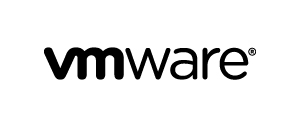September 21, 2021
Managing and Optimizing Your Multicloud Environment
By crafting a detailed strategy, organizations can optimize the security, cost and performance of their cloud ecosystems.
IN THIS ARTICLE
VIDEO: Reach the Mountaintop on Your Cloud Journey
Keys to Multicloud Success
Multicloud Strategies, Solutions and Services
The Challenges of Effective Multicloud Management
The Evolution of the Multicloud Landscape
Over the span of just a few years, the cloud has gone from something of a niche resource to being nearly ubiquitous.
As recently as 2012, fewer than half of large enterprises were using any cloud resources at all. Today, as more organizations move to digital platforms, virtually all of them are using cloud software or infrastructure, and the vast majority are using more than one cloud. According to a recent survey, just under 90 percent of enterprises have adopted a hybrid cloud strategy that incorporates both public and private cloud resources. Meanwhile, just over 90 percent of enterprises employ a multicloud strategy incorporating resources from two or more public cloud vendors. In fact, around half of enterprise workloads currently live in the public cloud. Still, only 1 in 3 enterprises uses multicloud management tools.
Part of this is likely due to the way most organizations arrived at a multicloud approach in the first place. Business and IT leaders are unlikely to seek out a multicloud environment for its own sake. After all, holding resources in multiple clouds means more to track, more to manage and more to optimize.
Instead, multicloud environments have popped up over time as organizations have sought to optimize factors such as cost and performance for different workloads. Here’s a pretty typical path: A company moves its email to the public cloud, then invests in other collaboration features such as file sharing and video meetings with the same vendor.
A while later, when it’s time for a hardware refresh, the company opts to move some of its resources to an Infrastructure as a Service (IaaS) model with a different cloud vendor. Then, over time, business and IT leaders make decisions about applications, infrastructure and platforms on a case-by-case basis, with some workloads bursting from on-premises resources into the public cloud during peak periods.
Suddenly, the organization has adopted both a hybrid cloud and multicloud approach but may not have a strategy in place to guide future investments and ongoing management and support.
Reach the Mountaintop on Your Cloud Journey
As cloud adoption has increased, some IT environments have become complex and difficult to manage. Learn how your organization can simplify and secure its multicloud approach.
MULTICLOUD ADVANCES
Organizations have evolved their cloud environments in recent years, increasing and diversifying the resources they use.
Early on, many organizations focused on a single cloud vendor, seeking to create a simple, streamlined environment. A company that initially migrated simple workloads such as email might have shifted to more sophisticated elements.
The rapid growth of the cloud was fueled by business leaders seeking benefits that include improved business agility, speed to market and customer experience — and by IT leaders seeking improved accessibility, scalability, security and reliability.
The move toward open-source applications has opened the door for app modernization and multicloud capabilities. This new landscape encourages multicloud and helps companies avoid situations where they feel locked in with a single vendor.
Keys to Multicloud Success
In a multicloud architecture, organizations can be more agile and move workloads where they will perform best. When implemented strategically, a multicloud environment can also improve disaster recovery, data management processes, cloud cost optimization and workload performance. According to Gartner, multicloud computing decisions are typically made with three overarching considerations:
SOURCING
While many public cloud offerings are essentially commodities, hyperscalers continue to compete with one another on both features and pricing, and a multicloud approach has become necessary in order to truly optimize a cloud environment. Gartner writes: “The decision may be driven by a variety of factors, including availability, performance, data sovereignty, regulatory requirements and labor costs.”
ARCHITECTURE
Modern applications can span multiple cloud providers or consume services from multiple clouds. Containerization isolates apps within their entire runtime environment, allowing users to move these apps between clouds while retaining full functionality — which, in turn, allows IT and business leaders to choose public cloud providers based on standards such as uptime and cost.
CLOUD-NATIVE APPROACH
“To ensure operational control,” Gartner writes, “enterprises want to unify administration and monitoring of their IT systems.” This means standardizing policies, procedures and processes and sharing tools that enable cost governance and optimization across multiple cloud providers. While a multicloud model has numerous benefits, organizations must work to ensure that their efforts aren’t undone by common challenges such as cloud sprawl and shadow IT.
Learn how CDW can help you manage your multicloud environment more effectively.
The State of the Private Cloud
Organizations’ data centers vary widely in their infrastructure and architecture. According to Forrester, IT decision-makers describe their private cloud environments in the following terms:
65%
Large developer environment designed to handle all new development efforts not launched on public cloud
65%
Infrastructure stacks with software-defined infrastructure
50%
Somewhat dynamic virtual server environment
50%
Static virtual server environment
35%
Small developer environment designed to launch fast standardized resources
24%
Container environment
Source: Forrester Consulting, “The Key to Enterprise Hybrid Multicloud Strategy,” January 2020
Multicloud Strategies, Solutions and Services
To solve the common challenges that inevitably pop up as multicloud environments grow to include more cloud vendors and different types of resources, a mix of strategies must be adopted — solutions and services that will set organizations on the path to success. A third-party partner is a vital component of most multicloud strategies. With strong cloud vendor relationships, these partners can help solve business problems for organizations, assessing and evaluating the existing environments, recommending solutions to enhance security and performance, and providing ongoing management services.
6 Pillars to Build Your Multicloud Environment
Business and IT leaders should consider the following factors as they look to optimize their multicloud environments:
SECURITY
Tools such as a cloud access security broker (CASB) and solutions like cloud security posture management (CSPM) can help organizations manage security and compliance, providing the same level of security organizations can achieve for their on-premises environments. A CASB sits between users and cloud applications, monitoring activity and enforcing organizations’ security policies. CSPM solutions can alert organizations to configuration vulnerabilities and compliance risks.
MIGRATION
A cloud partner can help an organization migrate its workloads to the cloud by identifying which applications should be moved and which should stay on-premises, determining if some applications would benefit from modernization, vetting different public cloud options and guiding the company through the transition from the corporate data center to the public cloud.
AUTOMATION AND ORCHESTRATION
An orchestration layer stretching across various clouds will allow an organization to take advantage of all resource pools without fracturing operations. Automation is an essential part of orchestration, a broad term that includes tools and processes to reduce the manual effort required to provision and manage complex environments. By embracing orchestration and automation, organizations can simplify critical business processes.
CLOUD MANAGEMENT
A cloud management platform (CMP) gives organizations real-time visibility into their private and public cloud resources, offering a centralized view of the entire environment. Organizations with strong policies on compliance, performance and cost management can utilize a CMP to implement these policies and ensure standardization. Managed services from a cloud partner can help organizations stay on top of their multicloud environments.
APPLICATION MODERNIZATION
A multicloud model allows organizations to seamlessly move applications from one cloud environment to another. However, this only works if apps have been modernized (with containerization being a common approach). Most organizations understand the importance of application modernization; however, some organizations may lack internal expertise, requiring assistance from a partner.
GOVERNANCE
Setting up a cloud center of excellence (CCoE) can help establish an overarching cloud strategy and provide governance that will guide when, where and how workloads are migrated, run and secured. A CCoE is a cross-functional team of internal stakeholders who set cloud policy, guide provider selection and assist with architecture and workload placement — with the goals of improving outcomes and managing risks.
How can CDW help your organization optimize its multicloud environment?
The State of Multicloud
According to a recent report from IDC, many organizations have adopted hybrid cloud or multicloud strategies, but some are slowed by challenges such as technology integration, security and cost.
90%
The percentage of enterprises that will rely on a mix of on-premises private clouds, public clouds and legacy platforms in 2021
34%
The percentage of enterprise applications that are deployed completely outside of a cloud environment
34%
The percentage of organizations that say that the complexity of application interoperability represents an obstacle to successful hybrid and multicloud implementation
29%
The percentage of organizations that cite security as an obstacle to successful multicloud implementation
Source: IDC, “Applications, Businesses, Clouds of Enterprise Digital Transformation,” November 2020
The Challenges of Effective Multicloud Management
Merely placing workloads with multiple public cloud vendors is one thing. Creating a multicloud environment that keeps data secure, is optimized for cost, performs at a high level and meets an organization’s business goals is quite another. None of these challenges are insurmountable, but the nature of a multicloud strategy means more balls to juggle at once — and organizations need appropriate monitoring and management tools and services to keep any of them from hitting the ground.
Here are some of the most common challenges organizations face when managing a multicloud environment:

COMPLEXITY
In a recent report, Forrester calls complex cloud environments “the new normal,” and notes that complexity deepens as organizations use multiple cloud vendors for different capabilities. Roughly 60 percent of multicloud organizations, the report notes, use 50 or more unique cloud software vendors. With so many cloud vendors to manage, many business leaders face an increase in cloud complexity.
According to Forrester, 77 percent of organizations agree that their multicloud environment “is increasingly complex,” and 85 percent agree that their goal is to “reduce complexity when it does not add value.” In other words, cloud complexity is not a marginal problem; it’s an issue nearly all organizations now grapple with. By reducing complexity, companies can improve customer experience, security and total cost.

MANAGEMENT
While management tools provided by cloud vendors offer some level of visibility into an organization’s cloud environment, they are often insufficient for managing a complex multicloud environment. According to Forrester, only 40 percent of organizations are “very satisfied” with the management capabilities of the cloud platforms with which they partner. As a result, many companies find that they need to lean on a managed service provider to streamline multicloud management.
Forrester notes that organizations that use managed services to get a handle on cloud complexity see a 21 percent average improvement in performance year over year. They are also more likely to keep down costs, achieve security improvements, win customer trust and improve their customer experience.
OTHER MULTICLOUD CHALLENGES
Cost optimization: Cost is a significant factor that drives organizations to a multicloud model. When one cloud vendor offers a better price on a service than another vendor, managers often decide to place their new workloads with the vendor offering the better deal. However, once multicloud environments grow in size, business and IT leaders may struggle to optimize costs over the long term.
According to industry survey data, nearly 75 percent of organizations plan to cost-optimize their existing use of cloud resources, making it the top cloud-based initiative. On average, organizations exceed their cloud budgets by nearly 25 percent. Many factors go into optimizing a multicloud environment for cost, beyond simply placing workloads with the vendor that offers the lowest price.
Many organizations fail to right-size their cloud environments. Rather than trimming their resources down to what is truly needed to run a given workload, they merely replicate their on-premises data center environments in the public cloud. Software licensing is another significant challenge; more than half of organizations struggle to understand the cost implications of cloud software licensing agreements.
In addition, it is important not to overlook shadow IT as a potential budget buster. It is easy for a multicloud environment to quickly sprawl out of control at organizations where employees have been empowered to spin up new cloud resources with little oversight.
Security and compliance: Not long ago, concerns about keeping data secure prevented some organizations from even considering the placement of many of their workloads in the public cloud. Today, most organizations don’t consider the public cloud to be inherently less secure than on-premises infrastructure.
Still, just as with on-premises resources, security and regulatory compliance remain top concerns for organizations with multicloud environments. According to Forrester, 37 percent of organizations consider underlying security a top factor affecting the selection of a cloud platform provider.
Efficiency and performance: Organizations must be deliberate about how they migrate resources to the public cloud, endeavoring to create a new architecture that will guarantee the highest level of availability and performance. Dependency mapping often proves to be a major challenge in cloud migration. According to industry survey data, more than 60 percent of organizations struggle with understanding app dependencies.
Performance is already a key consideration for organizations pursuing a multicloud strategy. According to Forrester, “50 percent of organizations use performance improvements as a metric to determine the success of their multicloud efforts.”
Story by Chris Gibes, the manager of the hybrid infrastructure practice at CDW. He has more than 20 years of experience in IT and has been a system administrator, storage area network architect, backup and recovery consultant, pre-sales SE [i am not sure what this stands for, but we should spell it out] and technology team lead, and pre-sales solution architect manager for the Northern and Central U.S.
Story by Ranjani Krishnamurthy, the leader of CDW’s services R&D team. She has been with CDW for more than 16 years, serving as manager of the services R&D team and the hybrid data center cloud team and as a productivity solutions domain manager, contact center professional services manager and technical lead for contact center consulting.





